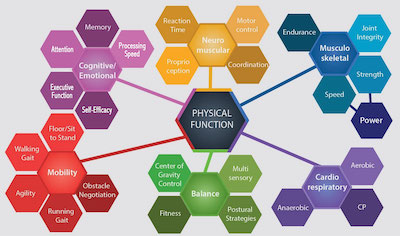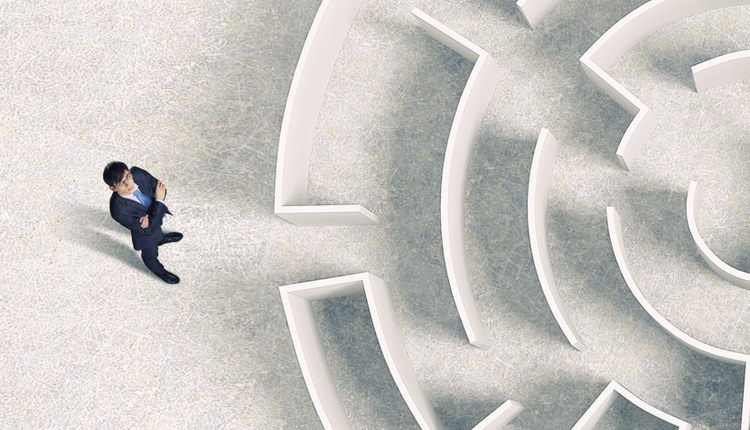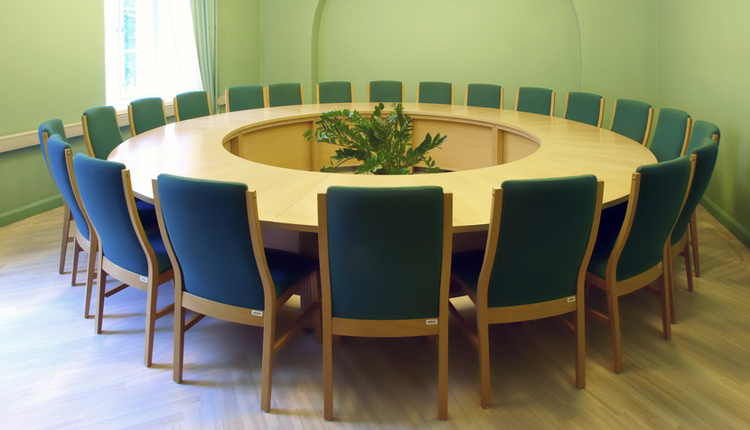
Personal training has evolved beyond sets and reps. We’re learning more and more that strength is just one component of our program design. Our clients need a plethora of training modalities to maximize their results.
Musculoskeletal is one of the 6 domains of human function we talk so much about in our Functional Aging Training model. These 6 domains are not just for older clients, but should be considered when training anyone over the age of 40.
When we look at the musculoskeletal domain, we see that it has 4 subdomains which each have multiple factors. We have shared from over 100 research studies that strength training alone has small effects on overall function. While as trainers we are often comfortable with strength training, we don’t want to forget that we need to be training speed, power and muscular endurance.
We know from the research that power training yields greater functional improvement than strength training alone. So a trainer’s approach has to have a mix of strength, speed, power, range of motion and muscular endurance training stimulus.
Of course, every client is unique. Some need more muscular endurance for tasks like gardening; others need more power for sports like golf. If a client is already having trouble doing chair stands, then lower body strength should be a top priority!
Here are some great examples that take only 5 to 10 minutes and can be incorporated into any training session:
Stepping exercises: For speed and power
• Stomping (as if you are smashing a cockroach)
• Step to a color as fast as you can (you can use agility dots that have various colors)
• Mini sprints, or stepping as fast as you can
• Faux falls, leaning forward as if you are about to fall and taking a big step
Jumping/Hopping: For speed and power
• Jumping, both feet
• Hopping, one foot
• Jump/hop: Jumping off both feet landing on one foot
• Hop/jump: Hopping off one foot and landing on both feet
(For those with significant joint issues faux/jumping, have them attempt to jump as high as they can, but just come up to their tiptoes. You can do that on both feet or on one foot.)
• Skipping
• Carioca or grapevine stepping (for speed once able)
• Side to side shuffling for speed
Of course there are hundreds of strength exercises, but here are some examples:
• Chair stands
• Power stands
• Lunge patterns, forward, diagonal, sideways
• Squatting
• Split squats
• Step-ups
If you are a hands-on learner, we would love to see you out at a live event soon! We have many live workshops and events coming up so be sure to visit www.functionalaginginstitute.com.



















